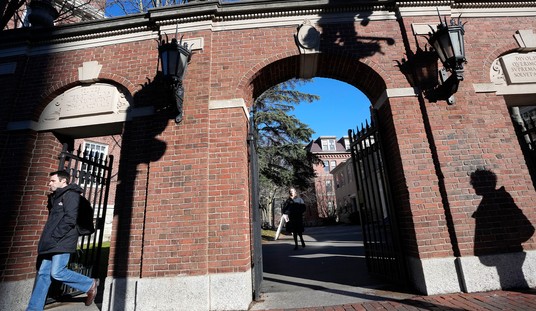It’s Saturday, and I went out on the front porch this morning after shoveling out from Nemo and got the mail as usual. There was an advertisement trying to get me to switch homeowner’s insurance and a coupon flyer for the local grocery store. That sort of surprise waiting in the mailbox doesn’t exactly get me all up in arms over the Post Office’s idea to cancel Saturday mail delivery. Up until now, I’ve been assuming that the Post Office is simply an unprofitable enterprise and they may have to put trucks out on the road less often to reduce costs. I suppose I’ve been mostly in line with Jon Stewart’s rather cynical take on the subject.
I can’t believe the business model of transporting letters with vehicles across the country for forty cents a pop is failing. Sorry… where ya want me to take that? Hawaii? Yeah, no trouble. I’ll put it on a plane, get it there in two days. Uh… ya got a quarter?
But perhaps there’s more to the story than that. Doug Mataconis links to Matthew Yglesias who seems to feel that government subsidy of more expensive deliveries to rural areas is part of the rot at the heart of this business model. What was once a lucrative monopoly, according to this line of thinking, has been squeezed out of the profit margins.
But the monopoly has become less lucrative and that’s not going to change in the future. That’s squeezed the budget, squeezed postal workers’ compensation packages, and is now squeezing the quality of nationwide mail service. As a country, we need to ask ourselves whether providing subsidized mail delivery to low-density areas is really a key national priority. Without the monopoly/universal service obligation, it’s not as if rural dwellers wouldn’t be able to get mail, it’s just that they might need to pay more in recognition of the fact that it’s inconvenient to provide delivery services to low-density areas. Nostalgia-drenched Paul Harvey Super Bowl ads aside, it’s not the case that rural Americans are unusually hard-pressed economically or are disproportionate contributors to the economy. They are, rather, the beneficiaries of numerous explicit and implicit subsidies, of which the Postal Service’s universal service obligation is one.
Doug seems to agree:
Most of the complaints one hears about privatizing first class mail and ending the USPS monopoly on its delivery center around the issue of what is to be done about delivery to rural areas. The basic idea behind is that it shouldn’t cost rural customers, or those who want to correspond with them, more to send first-class mail than it does to send first-class mail from one major city or suburb to another. There’s no economic rationale for this kind of policy. Indeed, it exists nowhere else almost nowhere else in the delivery business right now. If you want to send a package via USPS, you are generally going to pay based on where you’re sending it to. UPS prices its delivery services in much the same manner. The only place you see “flat-rate” pricing is in things such as overnight mail, which is based on an entirely different kind of business model from regular package shipping and for which the customer is paying a premium for the convenience of next-day, or 2nd-day, delivery of something that would ordinarily take a few days longer.
I’m no package delivery expert here, but I’d always sort of assumed that the United States Post Office was pretty much designed with an untenable business model baked into the cake. It’s something which is mandated by the Constitution, thereby bringing the government into the mix, but it’s being expected to run at a profit while conforming to a business model which no sane, private business would ever consider. It costs more to drive a letter or package fifty miles out into the boonies than it does to simply get it to a commercial hub in a city or suburb with the bulk of the parcels. If you charge the same amount for all of the letters, somebody is getting more value for the same price point than everyone else, simple as that. I suppose you have to average all the deliveries together to come up with a flat price which keeps you in the black, but it’s got to be one hell of a lot more than fifty cents per letter.
With that in mind, it’s hard to see how eliminating Saturday delivery does much to address the real problem. You’re still running the same losing business model… you’re just losing money more slowly by doing it one less day per week. I’m still not entirely opposed to just having the Post Office jack up the rates far enough to make the service profitable. If it costs more to mail junk – particularly bulk advertising and such – people might think more carefully about what they are mailing, rather than flooding our boxes. Exceptions could be made for free or low cost postage for the mailing of payments to utilities or answering required government correspondence. But do you really think it’s reasonable to be able to send a letter from Virginia to Oregon in two days for four bits?








Join the conversation as a VIP Member